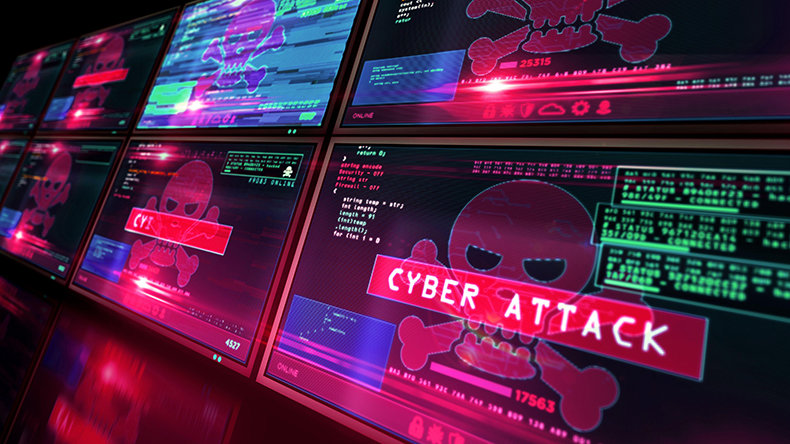The semiconductor industry now confronts a critical strategic constraint. The interconnectivity that enabled Industry 4.0 efficiencies has inadvertently exposed the sector's most valuable assets to continual cyber threats. Companies are connecting high-value operational technology (OT) with corporate IT networks, erasing the traditional security perimeters that once protected core functions. This is transforming cybersecurity from a technical, back-office concern into a central component of corporate strategy, directly impacting operational integrity, intellectual property protection, and financial performance.
Threats target innovation
Adversaries are actively targeting the semiconductor ecosystem to steal priceless intellectual property. These groups are executing advanced espionage campaigns, for example, as demonstrated by APT41’s recent infiltration of Taiwanese semiconductor firms through compromised software updates, acquiring proprietary chip designs and manufacturing trade secrets. This direct assault on a company's innovation pipeline erodes long-term competitive advantage. The semiconductor sector’s intricate global supply chain simultaneously presents significant vulnerability. Malicious actors compromise product integrity by introducing counterfeit components or embedding hidden hardware Trojans during fabrication. Such actions create immediate security risks and lasting threats to company reputation, undermining customer trust that forms the basis of business relationships.
Operational disruption intensifies
Ransomware threats have intensified beyond simple data encryption to become direct assaults on manufacturing itself. The 2023 ransomware attack on MKS Instruments illustrates this danger vividly. The resulting operational shutdown created a significant bottleneck that cost its client, Applied Materials, an estimated $250 million in a single quarter. This incident demonstrates how a breach in one part of the supply chain triggers costly disruptions for partners. The industry's reliance on legacy equipment compounds this risk. Semiconductor fabs operate highly specialized, capital-intensive machinery with long lifecycles, much of which engineers designed before modern cyber threats emerged. Business leaders must decide how to mitigate risks from these vulnerable, yet essential assets without undertaking expensive overhauls.
Strategic security responses
Companies are embedding security and resilience into their core business strategies. They champion a "secure-by-design" product philosophy that integrates robust security features directly into hardware. Security firm Exein develops solutions that operate at the firmware level, creating a trusted foundation directly on silicon. This approach transforms security from a feature into a core component of the product's value proposition.
AI powers proactive protection
Industry leaders are leveraging Artificial Intelligence for advanced risk analytics. Global foundry leaders such as TSMC are deploying sophisticated AI-driven platforms to continuously monitor vast data streams from manufacturing environments. These systems analyse equipment behaviour and network traffic in real time, enabling companies to detect and respond to anomalies before they escalate into significant incidents. This proactive use of technology demonstrates a strategic commitment to safeguarding critical assets and ensuring production uptime.
Collaborative defence
The industry is embracing strategic collaboration, recognizing that systemic risks require collective responses. TSMC leads in this area, driving development of the SEMI E187 standard for cybersecurity in new manufacturing equipment. This initiative, now adopted by many major fabs, compels equipment makers to build security into products from the start. The formation of the Semiconductor Manufacturing Cybersecurity Consortium (SMCC) strengthens the entire ecosystem. This collaborative spirit extends to specialized security partners, example, TXOne Networks, which provides solutions such as virtual patching to protect legacy systems that cannot easily be updated, demonstrating how standards and partnerships work together to manage complex risks.
Strategic considerations
Business executives in 2025 must weigh nuanced, second-order effects of their security strategies. The push for industry-wide standards, while beneficial, could inadvertently raise barriers to entry for smaller, agile firms that often drive disruptive innovation. A successful corporate strategy must foster a secure ecosystem without stifling the dynamism that fuels market growth. Furthermore, significant investment in AI-driven security platforms introduces new complexity. Leaders must consider potential adversarial AI, where competitors or state actors could develop methods to deceive these systems. A resilient security posture requires a diversified approach that complements AI with robust processes and skilled human oversight.
Navigating geopolitical currents
Executives must navigate the complex geopolitical landscape influencing supply chain strategy. Government initiatives promoting "reshoring" or "friend-shoring" present both opportunities and risks. While aimed at enhancing national security, these policies can lead to market fragmentation and increased operational costs. Formulating a strategy that balances national interests with the economic and innovative advantages of a global network remains one of the most challenging tasks for today's leadership teams.
The path forward
The semiconductor industry has entered an era where cybersecurity links inextricably to business success. It's no longer a cost center to manage but a strategic enabler of trust, resilience, and market leadership. Companies that weave proactive and forward-looking cybersecurity posture into their core business strategy will thrive and lead in the complex and competitive decade ahead.
More from author
More insights
Assess the marketplace with our extensive insights collection.
More insightsHear from analysts
When you partner with Omdia, you gain access to our highly rated Ask An Analyst service.
Hear from analystsOmdia Newsroom
Read the latest press releases from Omdia.
Omdia NewsroomSolutions
Leverage unique access to market leading analysts and profit from their deep industry expertise.
Solutions




